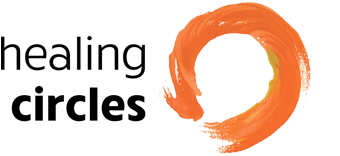Why Are Nurses Drawn to the Circle?
Why does the concept of healing circles resonate so strongly with nurses?
It’s a good question, as any health care professional or committed layperson can certainly develop the knowledge and skill to be a healing circles leader. In spite of this, the interest in healing circles by nurses has been strong enough to result in the creation of a Nursing Leadership for Healing Circles (NLHC) team, a group we invite you to meet through this blog post.
As nurses, most of us share a set of values related to our profession; believe that our ability to influence health is dependent on being in relationship with those we serve; and connect tightly to our professional heritage and our historical leaders. Our first leaders in nursing—from Florence Nightingale on—were political activists, community health leaders, spiritual leaders, rural health and mental health advocates, professionals with great concern for the transitions that occur at the beginning of life and the end of life. These individuals did not work in facilities or as support personnel to physicians, but rather their work was conducted in their communities, in schools, in homes, and in full relationship with their clients and their families. It’s really only been over the past five decades that nurses have predominantly worked in hospitals, yet today we educate and train nurses to be facility workers. Our professional secret is that hospitals have not been good to nursing. With ever shrinking patient lengths of stay, and with an increased focus on task-based productivity, few hospital-based nurses feel they have the time or support to build healing relationships with their patients, to know and care for them, or to really practice professional nursing.
The dilemma of hospital work for nurses is coupled with the fact that nurses define health differently than all other health care professionals. We do not define health as the presence or absence of disease, injury, or illness, but instead define health in terms of human response patterns. Human response patterns are those choices all people make every day—choices to lean toward healthy habits, healthy living, and happiness, or choices that eventually lead to dis-ease and potentially to disease. We realize the human response patterns are best influenced through relationships of trust and support and that the human-to-human intimacy fostered in healing circles provides a perfect arena and safe container for the support and nurturance of healthy response patterns.
In circle, humans tell their stories and share their response patterns. Pat Benner, a nationally known nurse leader, has said: “Through storytelling, individuals tell more than they intended to tell and more than they knew that they knew.” This statement alludes to the comfort and support provided in circle that encourages deep sharing and a willingness to express vulnerability; and also emphasizes that we not only share our experience through storytelling but that we learn from and are empowered by hearing our own voice. In holding a safe container—a circle—nurses have the opportunity to provide an environment that allows individuals to share their stories while also examining their response patterns, and to bend the arc of their lives toward health and happiness while resting in the supportive community of others. In this process, nurse leaders of healing circles are rediscovering and reclaiming the joy that brought them into nursing, the joy that we experience when we are truly practicing nursing. We invite you to join the healing circles movement through this exchange or through learning to become a circle leader/host or guardian.




